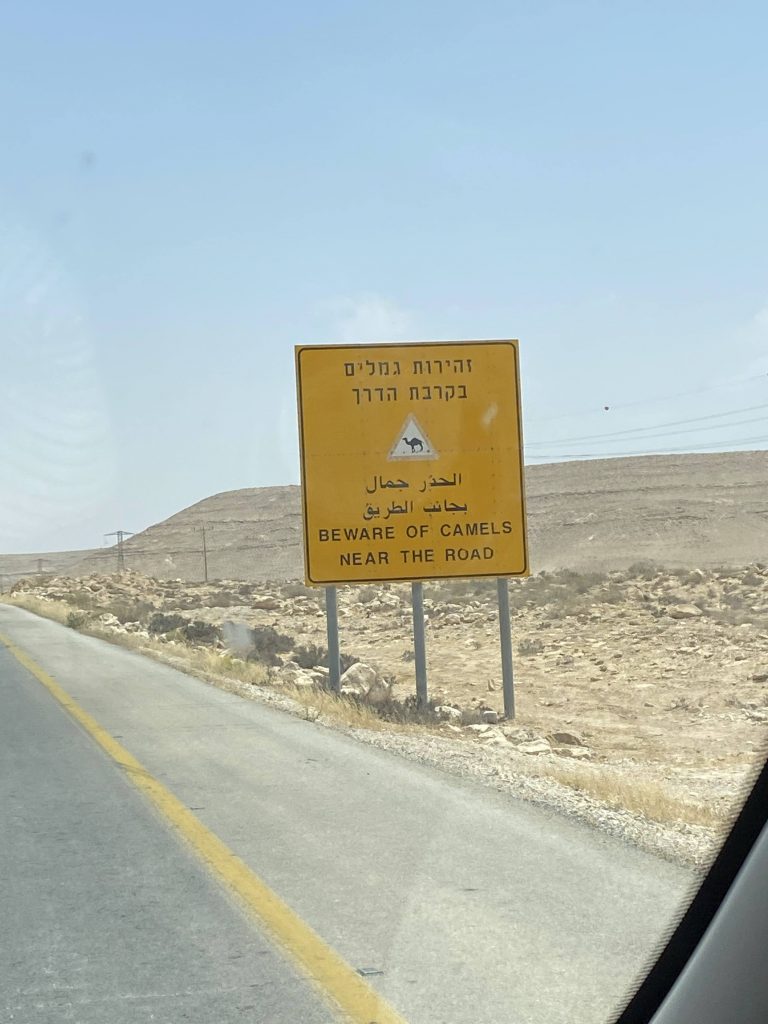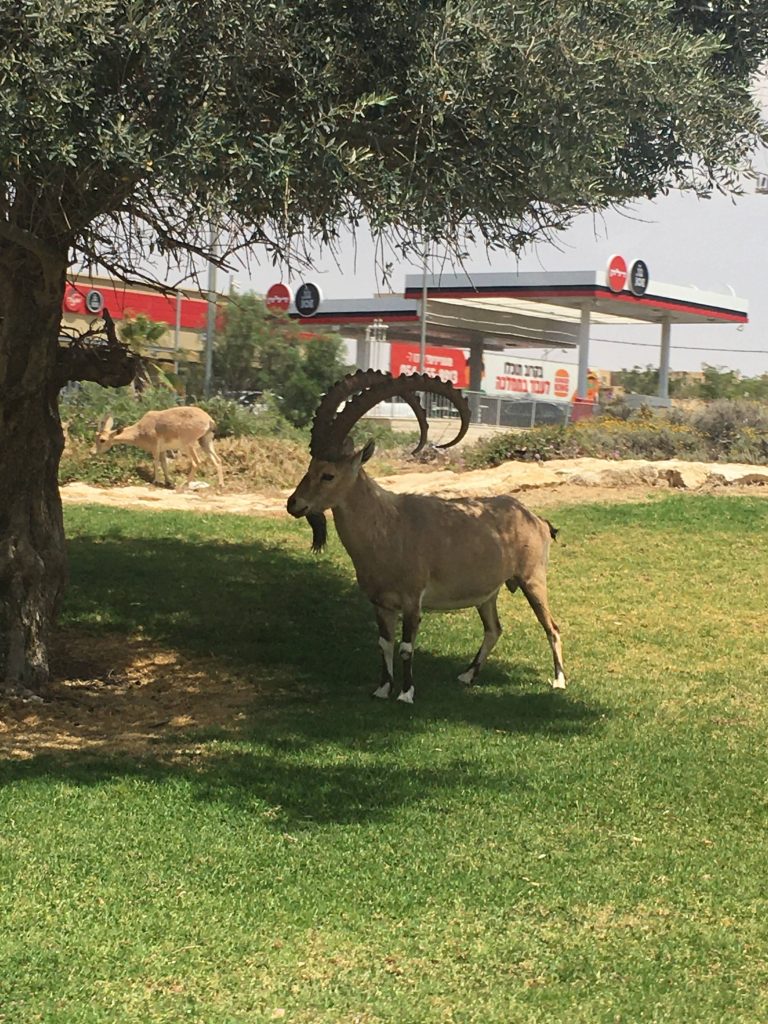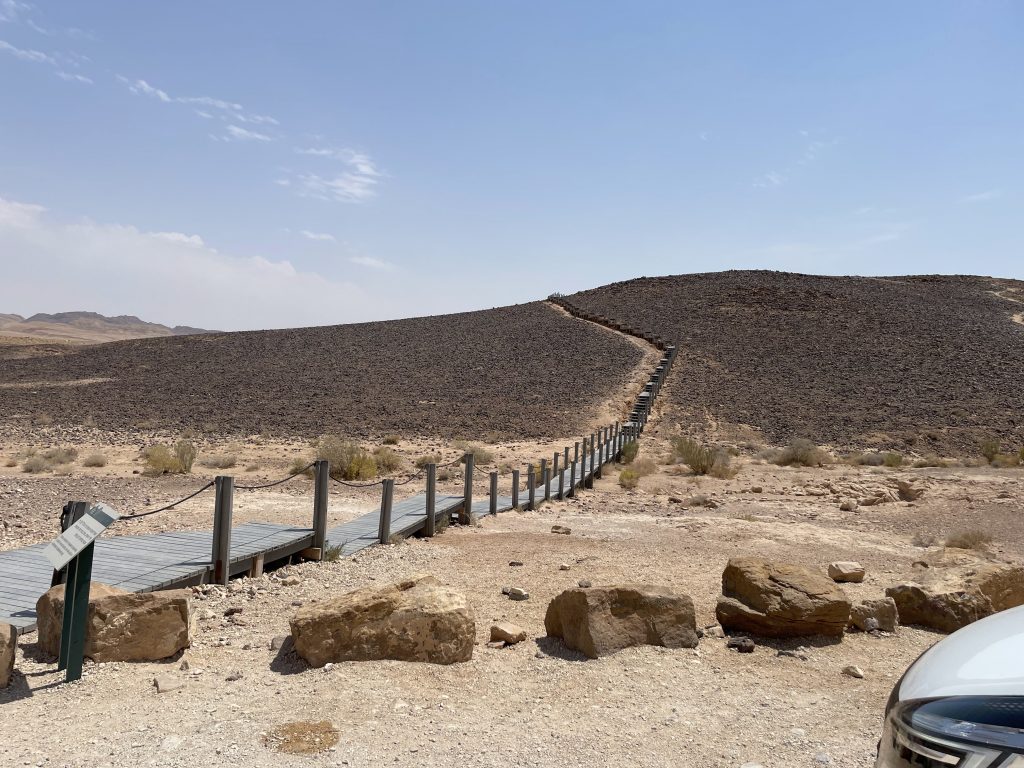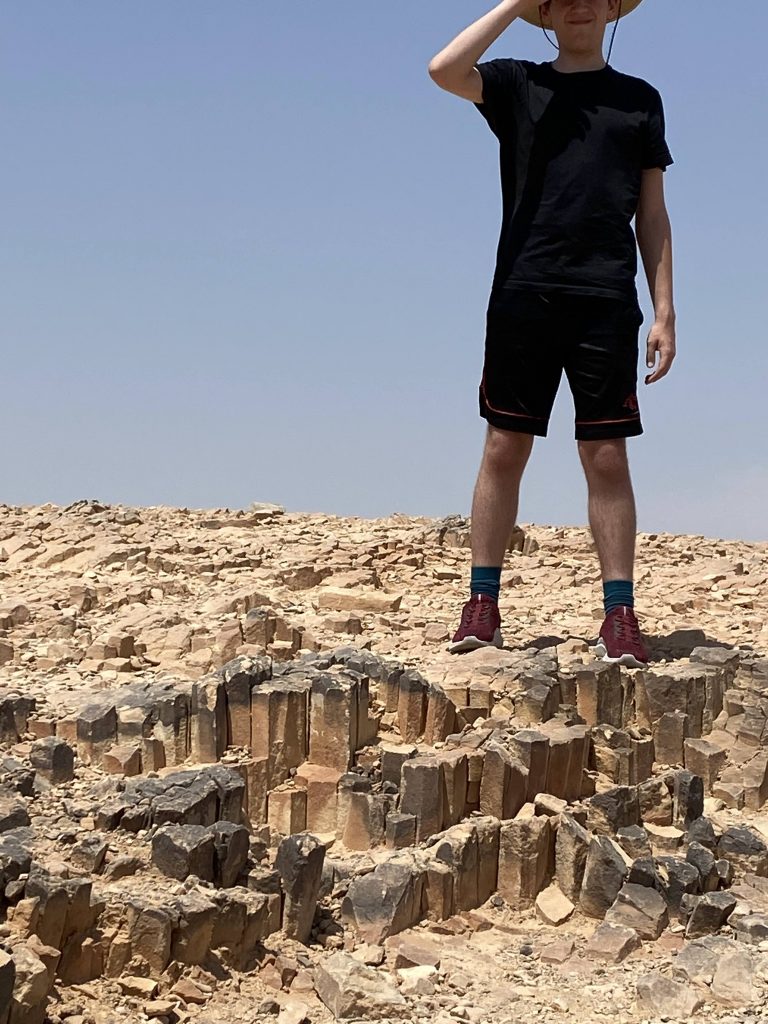Journeying from Jerusalem to the hot desert resort of Eilat, on the Red Sea. I’m so excited!

Our first order of business was to get the giant rental van out of the little tiny courtyard parking of our place in Jerusalem. It only took about 15 minutes, which was a real relief—the courtyard parking lot was full because today is a Shabbat—Shavuot, or the Feast of Weeks—and nobody is driving in the Jewish neighborhood.
At one point, there was only about six-eight inches on either side of the van. But with Zee and Hebs and I acting as spotters, Bradley was able to get the van out without too much trouble.


After gathering the grandmas and their luggage—using the Lion Gate this time, MUCH easier than the Herod Gate we’ve been using—we found a parking spot (easier said than done) and started tetrising our luggage to fit comfortably around the nine people in the van for four-plus hours to Eliat.

And away we go!
One of the weird things about driving though the Negev Desert is how blasted familiar it is. I mean—we kept exclaiming “This looks like the desert outside of Green River!” or “This could be the road south of Page!” We feel right at home (for now. I imagine the ocean will change that feeling significantly).






Israel has a geological park in the Negev—Makhtesh Ramon, an eroded anticline creating an enclosed oval valley. The 40 freeway down to Eilat goes right through it. It’s lovely—very nice exposures of the layers—but, spoiled by Utah’s grand scenery—I wouldn’t go out of my way to visit.
Except for one thing: Columnar jointed quartzite.


Oooh, it was so amazing. I’ve seen tons and tons of columnar jointed basalt—there’s a lovely outcrop in St George on the I-15; Devil’s Postpile and Giant’s Causeway and Devil’s Tower…it’s not terribly uncommon. But quartzite?
We pulled off the highway along a good gravel road for about a kilometer to the trailhead/staircase/walkway that leads to the “Carpenter’s Shop”—an hill with tons of the quartzite prisms just scattered everywhere. Many of them are black with desert varnish, and look like non-vesicular basalt. But break one open—it’s pale buff-colored inside.
The basic story is this: during the Cretaceous, magma intruded very near the surface of earth, but didn’t break through. It did, however, heat up the rocks and the groundwater, which metamorphosed the overlying sandstone into quartzite. When the quartzite cooled, it shrank slightly, creating six sided columnar joints.

I geeked out a bit, much to the amusement of my three kids who walked out with me. (Zee, Yum, and Hebs). It really is so cool.

Now we’re driving on the Egyptian border (hello, Egypt!!!!), about twenty minutes minutes from Eilat. We’re ready to be done. 🙂


